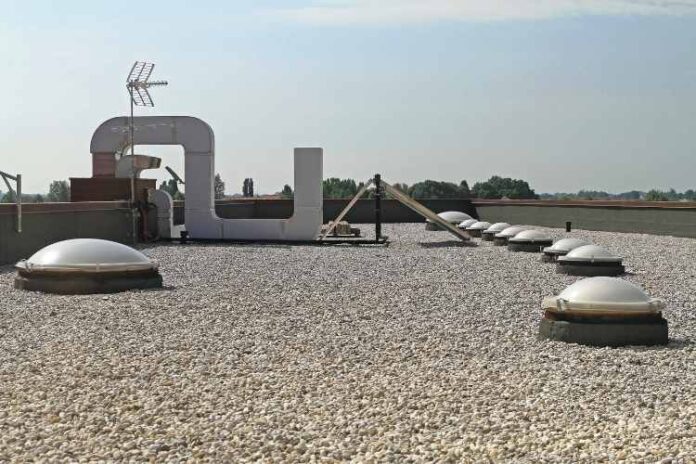A poorly designed roof that isn’t energy efficient is a waste of money and energy. Cheaper options such as flat roofs can have several issues such as leaky seams and poor air circulation.
Flat roofs are often durable but they don’t provide enough breathability to make your commercial structure comfortable. Installing skylights adds the insulation you need to increase ventilation.
If you’re interested in learning more, we’ve broken down our guide on the benefits you’ll see when you upgrade with commercial skylights for flat roofs.
The Benefits
Skylights can provide up to three times the amount of light as a traditional window, which can help reduce electric lighting costs. It creates a comfortable environment by distributing light and reducing glare. It also brings a unique look to a building and adds to its curb appeal.
Professionals should install them to ensure a proper seal for preventing leaks. You can find more details here on the installation of skylights for flat roofs.
The Different Types
There are different types of skylights for flat roofs, and each type has its advantages and disadvantages.
Domed
Domed is the most popular type and is easy to install. It provides a wide range of natural light but is not as energy-efficient as other types of skylights, and can also be more expensive.
Ridge
Ridge skylights are a good choice for flat roofs that receive a lot of sun exposure. They are more energy-efficient than domed and can help reduce energy costs but they can be difficult to install and need more maintenance than other types.
Tubular
Tubulars are one of the most energy-efficient and are designed to provide a high level of natural light. They are also easy to install but require more maintenance.
Glass and Plastic
According to materials, skylights are either rigid or flexible. Glass or plastic skylights are rigid, and made from a solid material.
Flexible
Made from a flexible material, such as rubber or vinyl are flexible skylights. This allows them to be installed in a variety of locations, including difficult-to-reach places. But they are more likely to leak than rigid.
Curb or Deck Mount
According to the installation method, they can be curb mount or deck mount. The curb mount sits on top of a metal or plastic frame. The deck mount flushes with the surface of the deck.
Solar-Powered
Finally, there are solar-powered skylights. These are the most expensive type, but they are also the most energy-efficient.
They use solar panels to collect energy from the sun and convert it into electricity. This electricity is then used to power a light source inside the skylight, providing natural light during the day
The Drawbacks
One of the biggest concerns is leakage. If a skylight is not installed properly, rain and snow can enter the building, causing damage to the interior.
Skylights can also be a source of heat loss in the winter and heat gain in the summer. They can let in a lot of heat during the summer, making it difficult to keep a building cool.
Also, they can be a safety hazard, especially on flat roofs, as they can create an opening for someone to fall through. They can be quite expensive to install and maintain.
Finally, they can also be a liability in the event of a fire, as they can allow flames and smoke to enter a building.
Things to Consider Before Making a Decision
The type of roofing material and the pitch of the roof are two important factors to take into account. Standing seam metal roofs are a great option for flat roofs because they are durable and fire-resistant. But, if your roof has a low pitch, you may need to install a curb-mounted instead of a flush-mounted.
The type of skylight and the size of the opening are also important considerations. A small room will not need a large one, and a large room will need a larger one.
It will also affect the size of the opening. A tubular will have a smaller opening than a pyramidal. Taking both into account will help you choose the best skylight for your needs.
The location on the roof is another important consideration. The orientation of the building and the angle of the sun will affect the location of the skylight.
Finally, the skylight should be large enough to allow for adequate light to enter the space, but not so large that it becomes a liability.
How about Maintenance?
As a commercial property owner, you understand the importance of a well-maintained roof. Flat roofs are especially vulnerable to weather damage and leaks, so it’s critical to keep up with maintenance.
Skylights are a great way to let natural light into your space, but they can also be a weak spot on your roof. That’s why it’s important to choose a quality skylight and have a professional install it.
Once it’s in place, be sure to inspect it regularly and keep it clean to prevent leaks.
Upgrading to Skylights for Flat Roofs
If you’re looking for commercial skylights for your business, this guide has everything you need to know. From types of skylights for flat roofs to installation tips, this guide covers it all.
So what are you waiting for? Get started on finding the perfect skylight for your business today.
Need some more great tips? Keep scrolling to our blog for more. We have plenty of helpful guides for you and your business!


